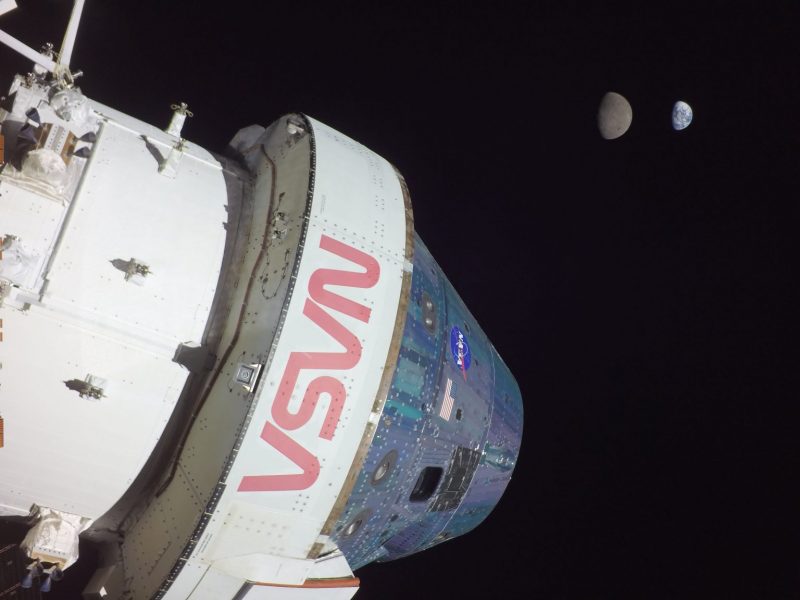
Anniversary of the famous Earthrise photo
Fifty-five years ago, on Christmas Eve in 1968, William Anders, aboard the Apollo 8 spacecraft, turned his camera toward Earth and captured a photo that’s now legendary. It was a photo that showed humans a new perspective, with the moon in the foreground and Earth floating in distant space. Almost immediately, people began speaking of this iconic photo as an Earthrise. Ultimately, the photo image helped spur the environmental movement.
The 2024 lunar calendars are here! Best New Year’s gifts in the universe! Check ’em out here.
NASA’s Scientific Visualization Studio released the video below on the 45th anniversary of the photo now known as “Earthrise.” The position of Apollo 8 and what the astronauts saw through the windows of the spacecraft are recreated and matched with audio from the flight.
You can hear the voices of the Apollo 8 astronauts: Commander Frank Borman and crew members William A. Anders and James A. Lovell. On the astronauts’ fourth orbit of the moon, Borman performed a roll maneuver of their craft, which put them in position to catch the Earth ascending over the lunar horizon. The video relays the exciting moments as they are surprised with the view for the first time and grapple to get color film to capture the momentous photograph, while joking that the image was not part of their schedule.
An iconic moment in history
Dan Rather described the iconic image in his book, What Unites Us. He explains how it captures the peaceful Earth in the darkness of space and what was really happening on the planet at that moment of history:
This image, so peaceful and yet so breathtaking, was taken at the end of a turbulent year. It was Christmas Eve 1968, but from up there you would never know that a hot war was raging in Vietnam or that a Cold War was dividing Europe. You wouldn’t know of the assassinations of Dr. Martin Luther King Jr. or Bobby Kennedy. From that distance, people are invisible, and so are cities, countries, and national boundaries. All that separates us ethnically, culturally, politically, and spiritually is absent from the image. What we see is one fragile planet making its way across the vastness of space.
With the click of a shutter, our spaceship Earth and everyone aboard was captured by the first humans to venture beyond the bounds of Earth’s gravity and give us a better picture of our home.
This is what spacecraft reentry looks like.
A U.S. Air Force ALOTS (Airborne Lightweight Optical Tracking System) camera mounted on a KC-135A aircraft flown at 40,000 ft altitude captured this photo of Apollo 8 reentering Earth's atmosphere on this day in 1968. pic.twitter.com/UzLosEElbK
— National Air and Space Museum (@airandspace) December 27, 2020
Here’s Apollo 8 entering our atmosphere on December 27, 1968.
And 55 years later another iconic sight

Bottom line: Astronaut William Anders took this iconic photo of Earthrise on the fourth orbit of the moon aboard Apollo 8 on December 24, 1968.
Click here to read more details about the NASA visualization.











